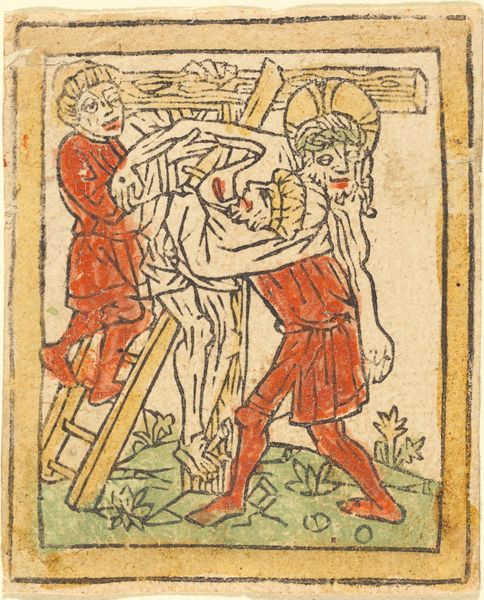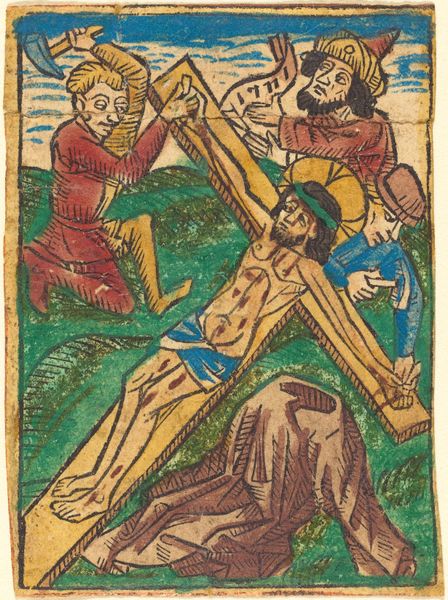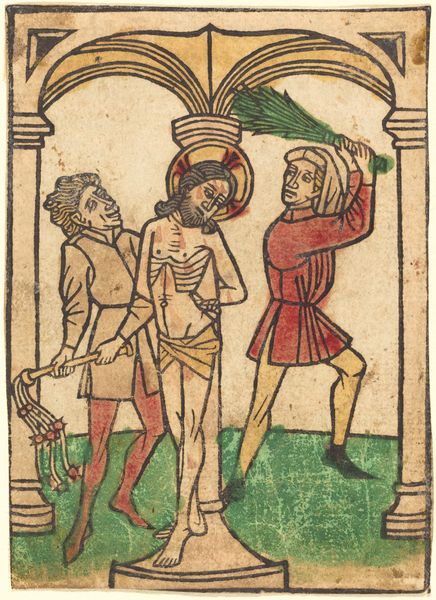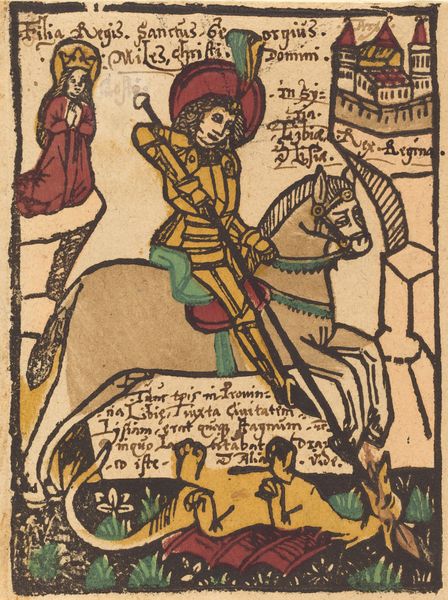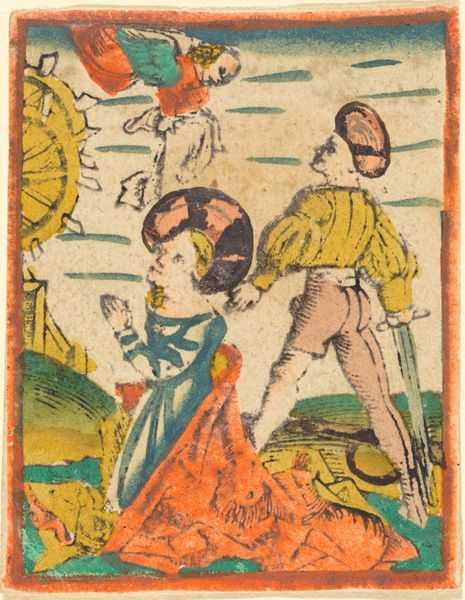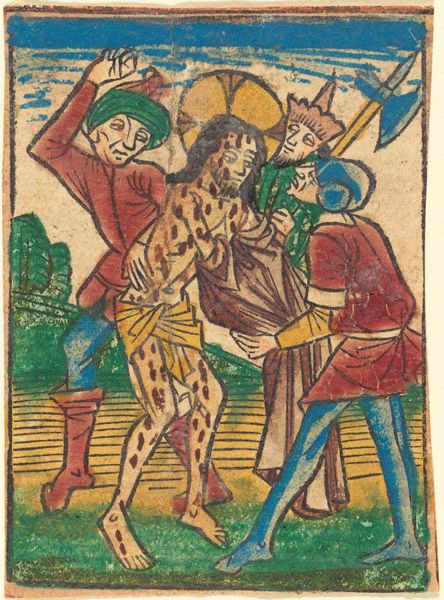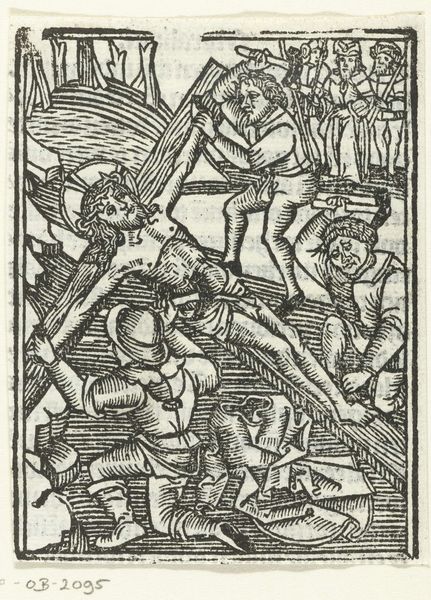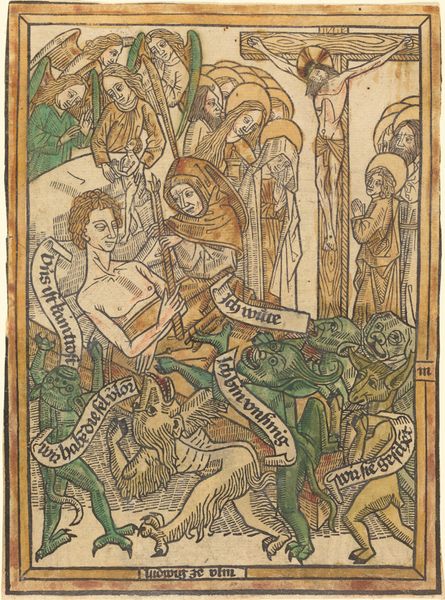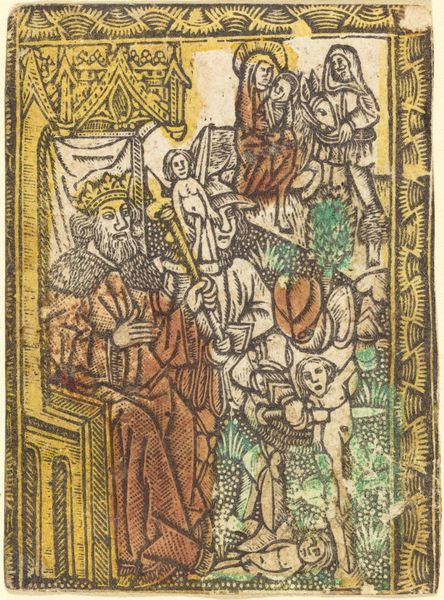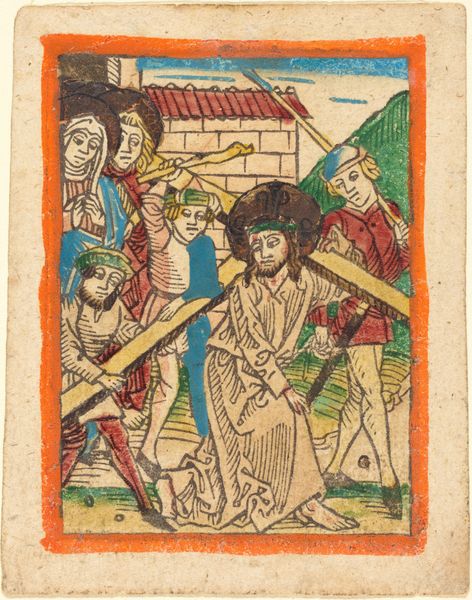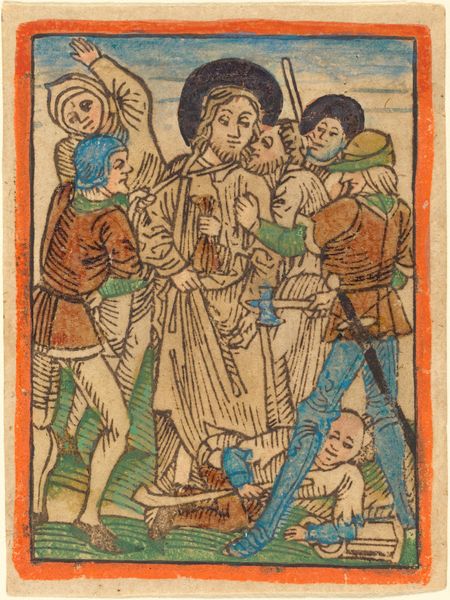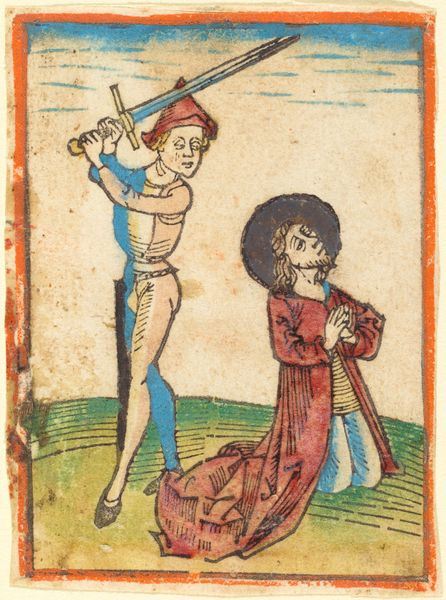
print, woodcut
#
medieval
# print
#
figuration
#
woodcut
#
history-painting
#
northern-renaissance
Copyright: National Gallery of Art: CC0 1.0
Editor: This is an anonymous woodcut from around 1470 to 1480, titled "Christ Nailed to the Cross." It's striking because it seems almost like a miniature comic panel of a brutal event. What elements stand out to you in this print? Curator: What captures my attention is the stark depiction of labor. This wasn't painted with precious pigments on fine linen, but carved into wood, pressed, and printed. The medium speaks to a wider audience, not just the elite. Consider how the printing press itself revolutionized the spread of ideas, influencing society beyond just art. Look at the artisans depicted here—they are participants, actively engaged in the physical process. Editor: That’s fascinating, I hadn’t considered it that way. It is almost brutal with these heavy lines; a functional kind of image, meant to reach more people… but, doesn't it lessen the artistry somehow, by being so utilitarian? Curator: I think it challenges our ideas of 'artistry.' It compels us to examine the labor that creates images and meaning, the means by which it spreads and functions in society. The image isn't just devotional, but is made possible by these artisans using wood, tools, ink… This materiality connects it to the world of production, trade, and belief systems beyond just aesthetics. The printing of religious imagery fed a growing market for personal devotional objects. Editor: So it's not about *if* it is art, but about *how* it becomes art through its making, its distribution and its use by everyday people. It sounds almost revolutionary, for its time! Curator: Precisely. And considering the turbulent socio-political climate of the late medieval period, the ability to mass produce images like these offered unparalleled opportunities for cultural influence. So, what have you learned, viewing it through this materialist lens? Editor: I learned that even religious art can be a powerful commodity! By examining the context in which this piece was made, its medium, and how the artist portrayed the work involved in Christ’s crucifixion, we gained insights into the ways this imagery operated in society, and challenges our traditional understanding of art. Curator: A fruitful reflection. Thank you.
Comments
No comments
Be the first to comment and join the conversation on the ultimate creative platform.

